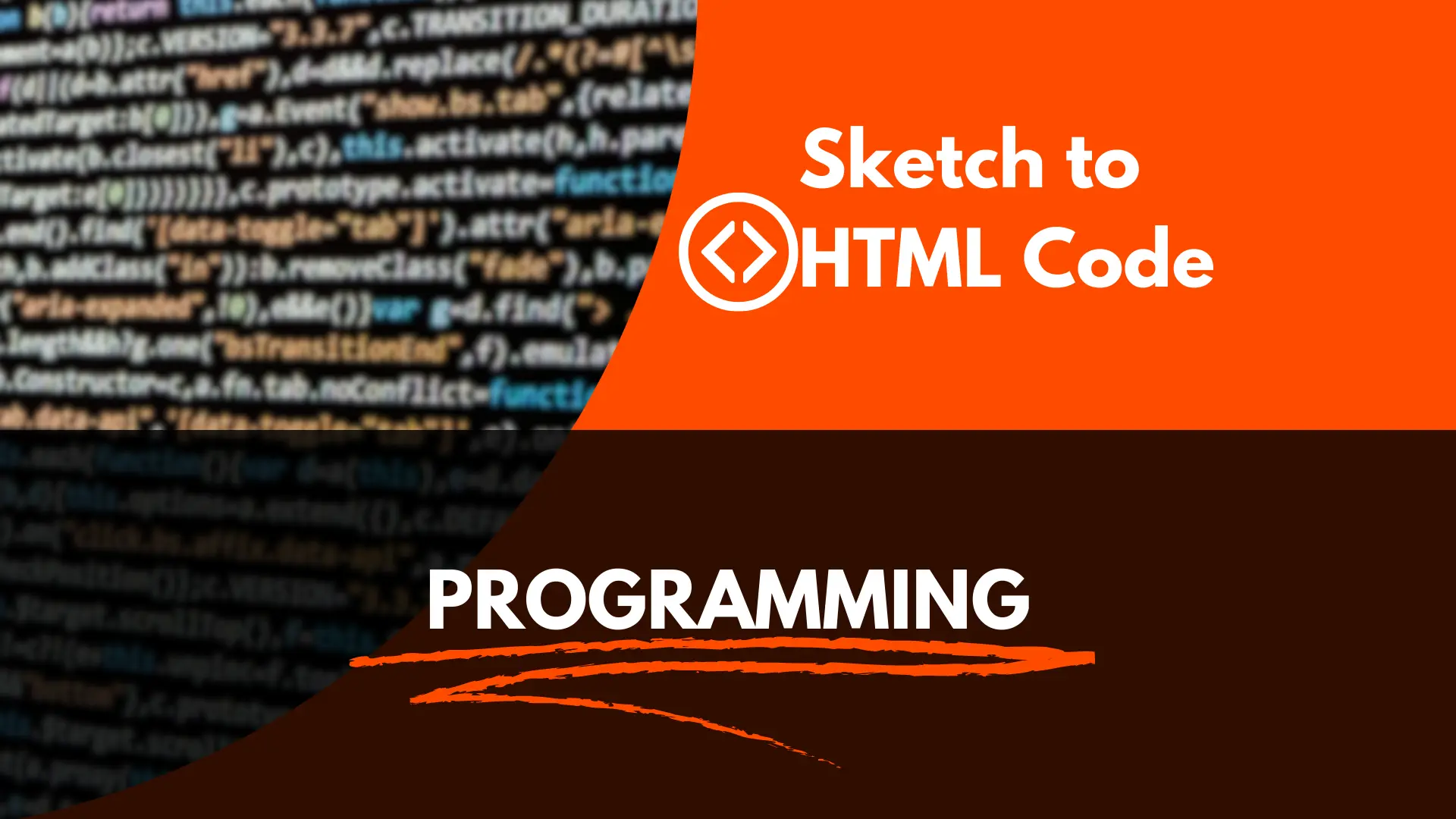Index
Introduction
Using Sketch2code to convert your sketch to code
In the dynamic world of web development, staying ahead of the curve often requires adopting innovative technologies that streamline and enhance the design process. One such groundbreaking advancement is the emergence of AI-powered tools like Sketch2Code, which revolutionize the way designers and developers collaborate by transforming hand-drawn sketches into functional HTML code. This convergence of design and technology marks a significant leap towards more efficient and seamless web development.
Sketch to HTML Code: A Paradigm Shift
Traditionally, the transition from design to code has been a complex and time-consuming process. Designers create intricate sketches of websites or applications, and then developers manually interpret these sketches into HTML, CSS, and JavaScript code. This manual process is not only prone to errors but also requires extensive communication between designers and developers to ensure the design intent is accurately translated into code. However, with the advent of sketch-to-HTML AI technologies, this workflow has undergone a transformative shift.
Sketch to Code Online: Bridging the Gap
One of the remarkable aspects of sketch-to-code AI tools is their online accessibility. Designers and developers are no longer confined by geographical limitations or the need for specific software installations. Sketch-to-code platforms allow users to upload their sketches to a cloud-based system, where AI algorithms analyze the sketches and generate corresponding HTML and CSS code. This online accessibility fosters collaborative environments where teams can work together seamlessly, regardless of their physical locations.
The Power of AI in HTML Code Generation
At the heart of the sketch-to-code revolution lies the power of artificial intelligence. AI algorithms are trained on vast datasets of sketches and their corresponding HTML representations. This training enables the AI to recognize patterns, interpret design elements, and generate code that mirrors the original sketch. The technology's ability to learn and adapt from a diverse range of designs contributes to its accuracy and efficiency.
Pix2Code: Pioneering the Sketch-to-Code Movement
 One notable pioneer in the sketch-to-HTML AI landscape is Pix2Code. Developed by Tony Beltramelli, Pix2Code utilizes deep learning techniques to translate graphical user interfaces (GUI) designs into code. This tool demonstrated how AI can bridge the gap between design and development, allowing for rapid prototyping and reduced development timelines.
One notable pioneer in the sketch-to-HTML AI landscape is Pix2Code. Developed by Tony Beltramelli, Pix2Code utilizes deep learning techniques to translate graphical user interfaces (GUI) designs into code. This tool demonstrated how AI can bridge the gap between design and development, allowing for rapid prototyping and reduced development timelines.
Fronty AI: Bridging Design and Development
Fronty AI, another player in the field, takes sketch-to-code conversion a step further. It employs a combination of computer vision and machine learning to convert sketches into interactive prototypes. The tool not only generates HTML and CSS but also adds interactivity through JavaScript, pushing the boundaries of what sketch-to-code AI can achieve.
Monday Hero: Enabling Designer-Developer Collaboration
The Monday Hero platform redefines the collaboration between designers and developers by offering an end-to-end solution for sketch-to-HTML conversion. It allows designers to upload their sketches, and the AI engine automatically generates responsive HTML and CSS code. This not only accelerates the development process but also ensures that the design's responsiveness is maintained across various devices.
Empowering Creativity and Iteration
Sketch-to-code AI tools have a profound impact on the creative process by providing designers with the freedom to explore and iterate on their ideas more rapidly. Designers can sketch out multiple variations of a user interface, and the AI can quickly translate these sketches into code. This enables designers to visualize their concepts in a tangible form, gather feedback, and make informed decisions about the design's direction. The accelerated iteration process encourages creativity and allows for more refined designs before committing to the development phase.
Reducing Barriers to Entry
The accessibility of sketch-to-code AI tools can significantly lower the barriers to entry for aspiring designers and developers. Traditional web development requires proficiency in multiple programming languages and frameworks, which can be daunting for beginners. However, with the assistance of AI-driven code generation, individuals with limited coding experience can still bring their design ideas to life without the need for extensive coding knowledge. This democratization of web development encourages a diverse range of voices to contribute to the digital landscape.
Enhancing User Experience through Automation
AI-powered sketch-to-code conversion doesn't just benefit designers and developers; it also has the potential to enhance the overall user experience. By automating the translation of design elements into code, the likelihood of human error is reduced. This leads to more consistent and error-free user interfaces, ultimately resulting in smoother navigation and interactions for end-users. Furthermore, AI-generated code can incorporate best practices for responsive design, ensuring that websites and applications function seamlessly across various devices and screen sizes.
A Glimpse into the Future
The rapid evolution of sketch-to-code AI technology raises exciting possibilities for the future of web development. As AI algorithms become more sophisticated, they will likely expand their capabilities beyond HTML and CSS generation. The integration of AI-generated code with content management systems (CMS) and e-commerce platforms could further streamline the creation of fully functional websites and applications.
Challenges and Considerations
 While the promise of sketch-to-code AI is undeniable, there are challenges that need to be addressed. The AI-generated code may sometimes require manual adjustments to align with specific design preferences or to optimize for performance. Additionally, designers and developers should remain engaged throughout the process to ensure the AI accurately captures the intended design nuances.
While the promise of sketch-to-code AI is undeniable, there are challenges that need to be addressed. The AI-generated code may sometimes require manual adjustments to align with specific design preferences or to optimize for performance. Additionally, designers and developers should remain engaged throughout the process to ensure the AI accurately captures the intended design nuances.
Conclusion
The sketch-to-code revolution powered by AI represents a seismic shift in the way web development is approached. The ability to transform sketches into functional HTML code with remarkable accuracy not only accelerates the development process but also enhances collaboration between designers and developers. Platforms like Pix2Code, Fronty AI, and Monday Hero exemplify the potential of AI-driven design-to-code conversion. As these technologies continue to mature, we can expect more efficient, streamlined, and creative web development processes, ultimately leading to a more vibrant and dynamic online landscape.
